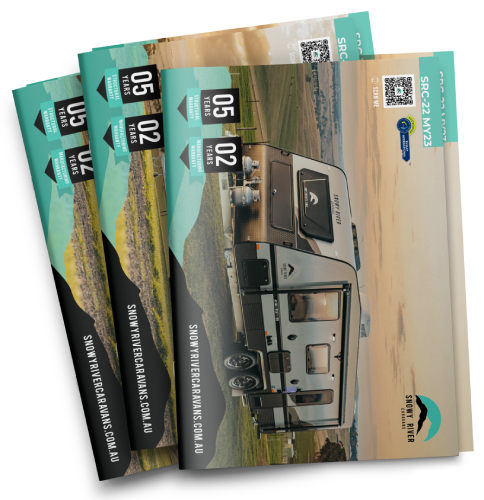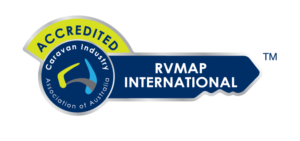- Home
- About
- Media
- Our CaravansSRCSRC-14
SRC-14
from $55,990 Tow-Away Nationwide*
Welcome to the world of the 2023 SRC-14, the ultimate small caravan with ensuite that doesn't sacrif...
 Sleeps up to 2
Sleeps up to 2 Refrigerator
Refrigerator Shower
Shower Toilet
Toilet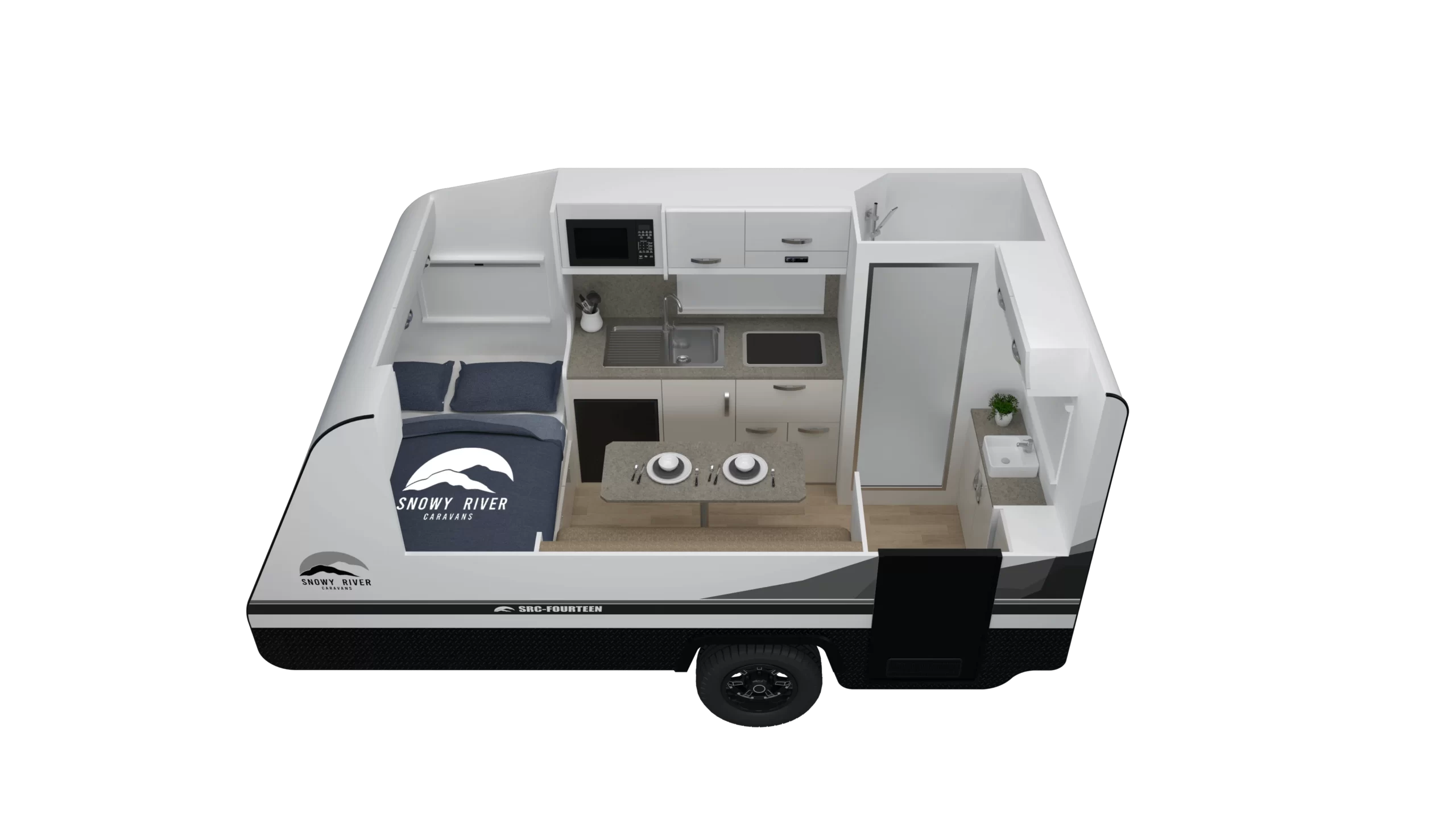 SRC-16
SRC-16SRC-16
from $59,490 Tow-Away Nationwide*
The 2023 SRC-16 is a 16ft caravan with shower and toilet and tailor-made for an unforgettable Aussie...
 Sleeps up to 2
Sleeps up to 2 Refrigerator
Refrigerator Shower
Shower Toilet
Toilet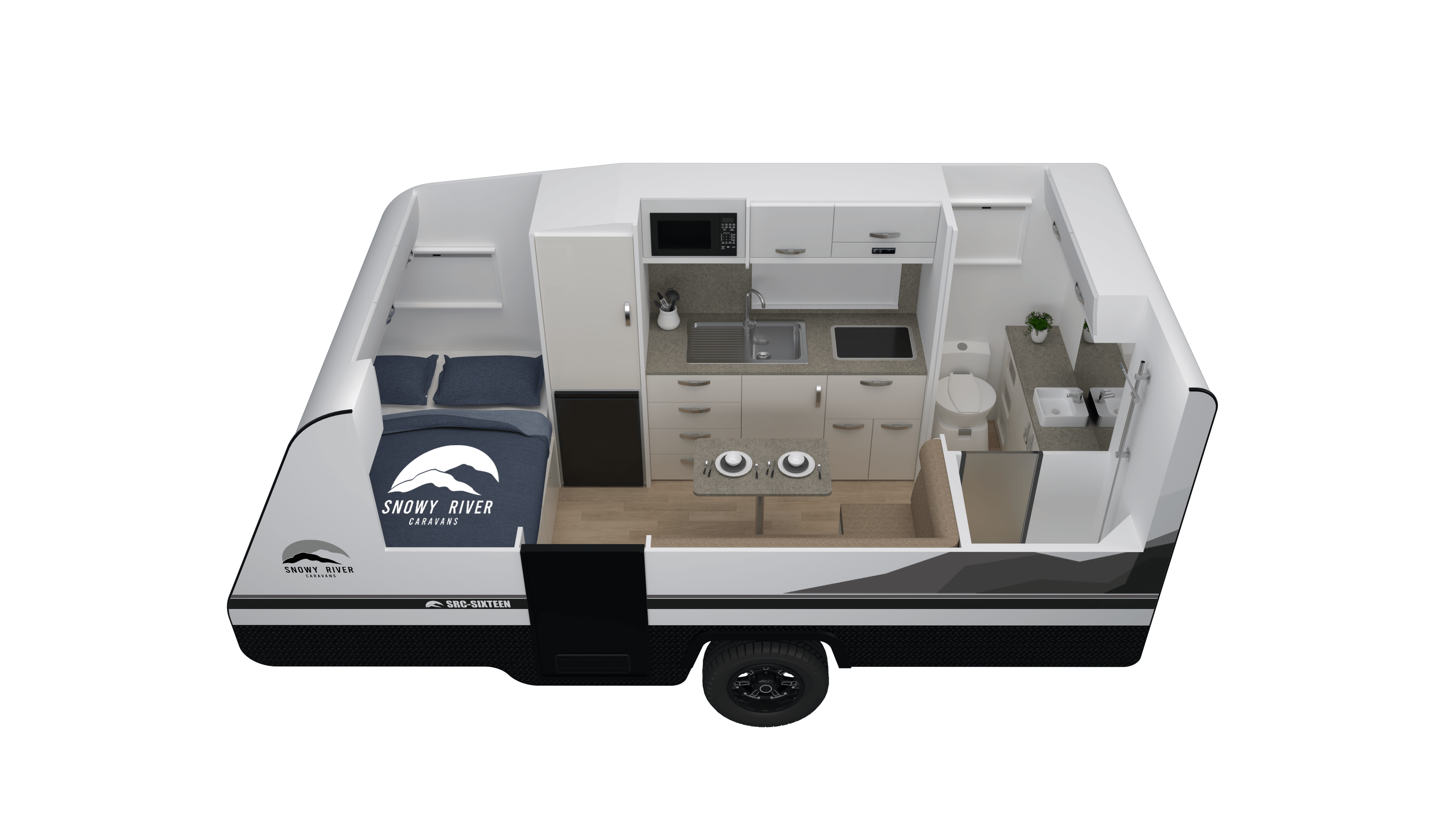 SRC-17
SRC-17SRC-17
from $63,490 Tow-Away Nationwide*
The redesigned SRC-17 2023 model is a small caravan with shower and toilet and the perfect choice fo...
 Sleeps up to 2
Sleeps up to 2 Refrigerator
Refrigerator Shower
Shower Toilet
Toilet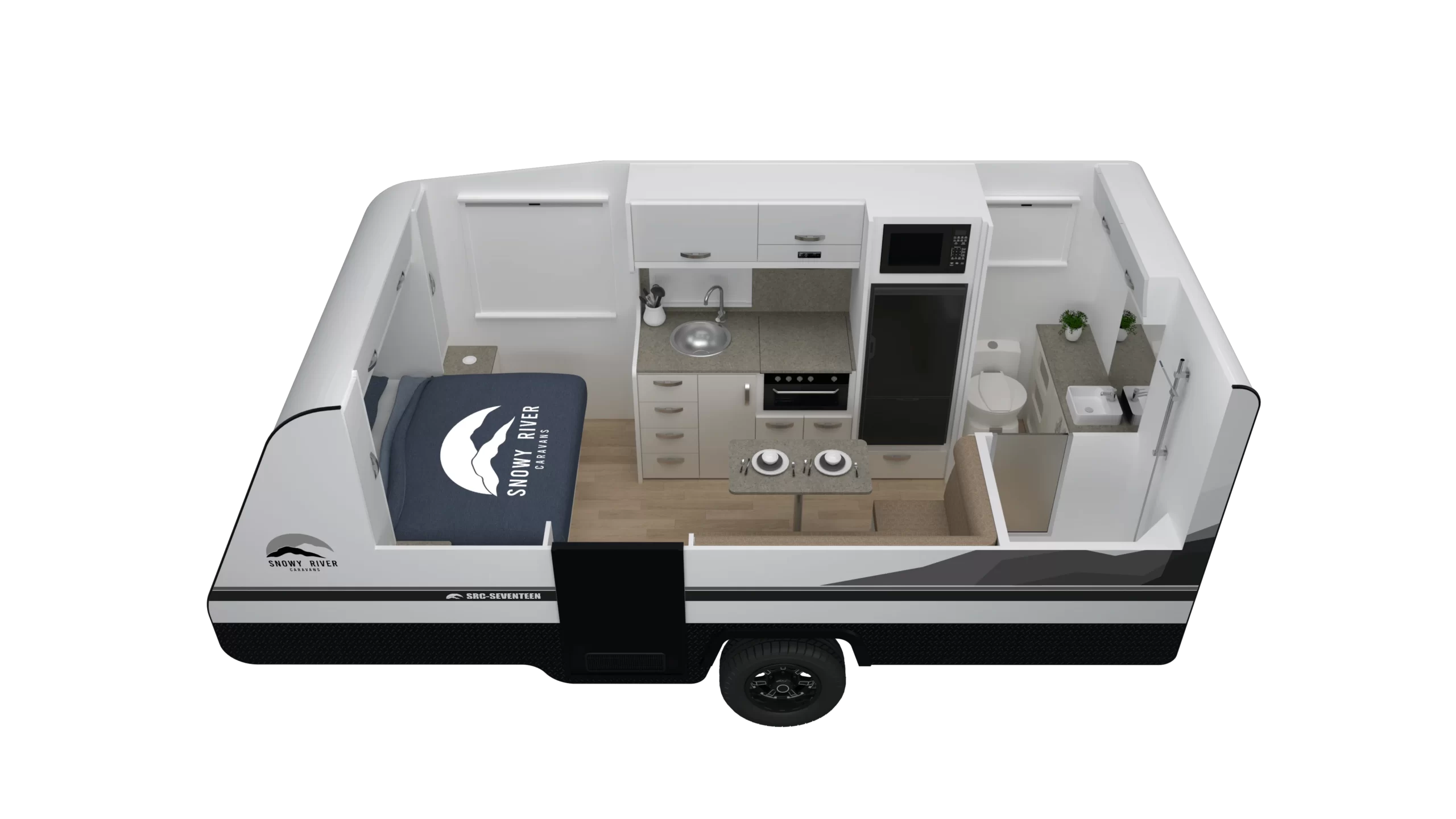 SRC-18
SRC-18SRC-18
from $66,490 Tow-Away Nationwide*
The 2023 SRC-18 model is an 18 ft caravan with ensuite that has been expertly redesigned to provide ...
 Sleeps up to 2
Sleeps up to 2 Refrigerator
Refrigerator Shower
Shower Toilet
Toilet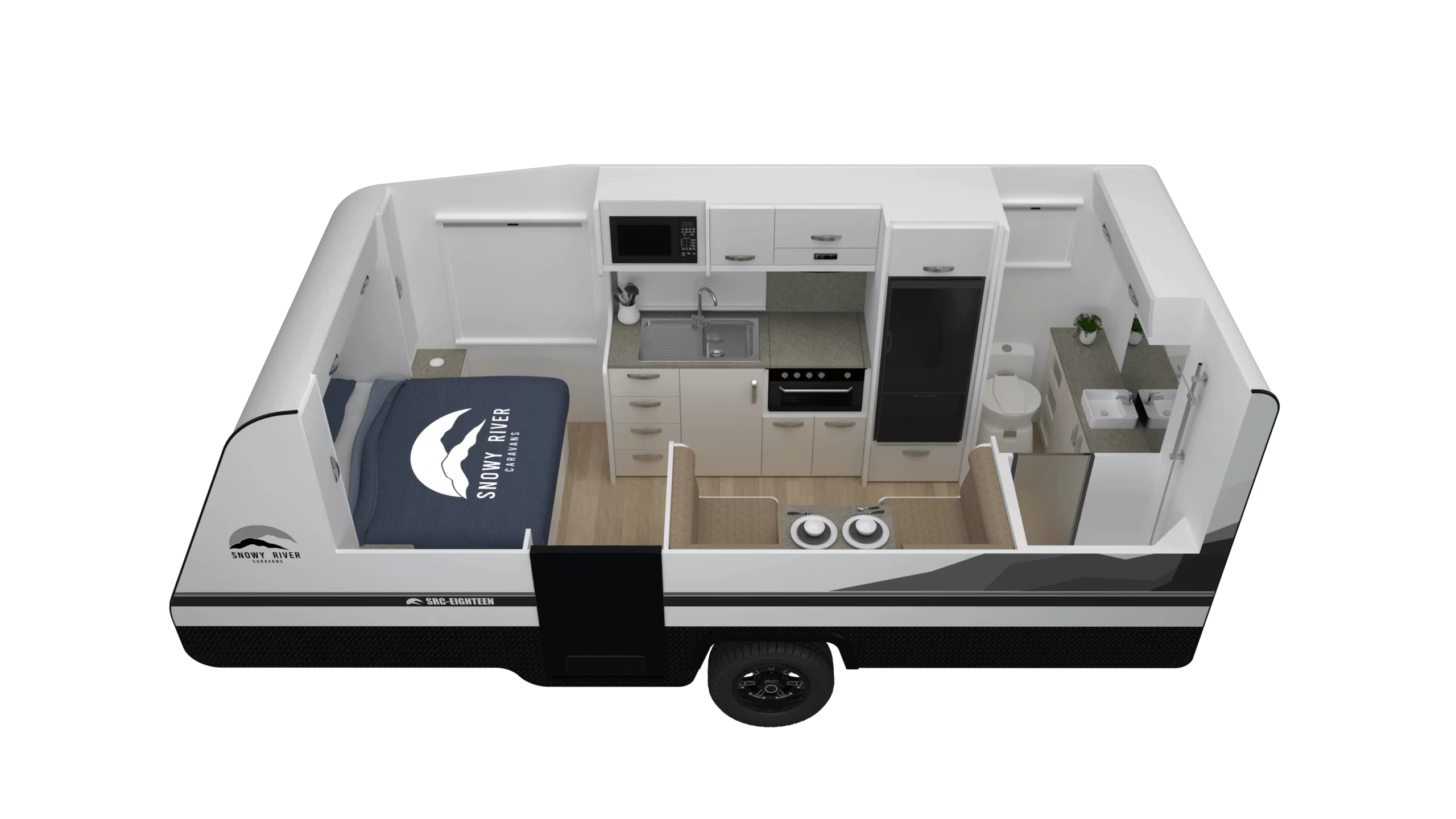 SRC-19
SRC-19SRC-19
from $69,990 Tow-Away Nationwide*
Step inside the 2023 SRC-19, a 19ft caravan for sale that offers a world of refined elegance, luxuri...
 Sleeps up to 2
Sleeps up to 2 Refrigerator
Refrigerator Shower
Shower Toilet
Toilet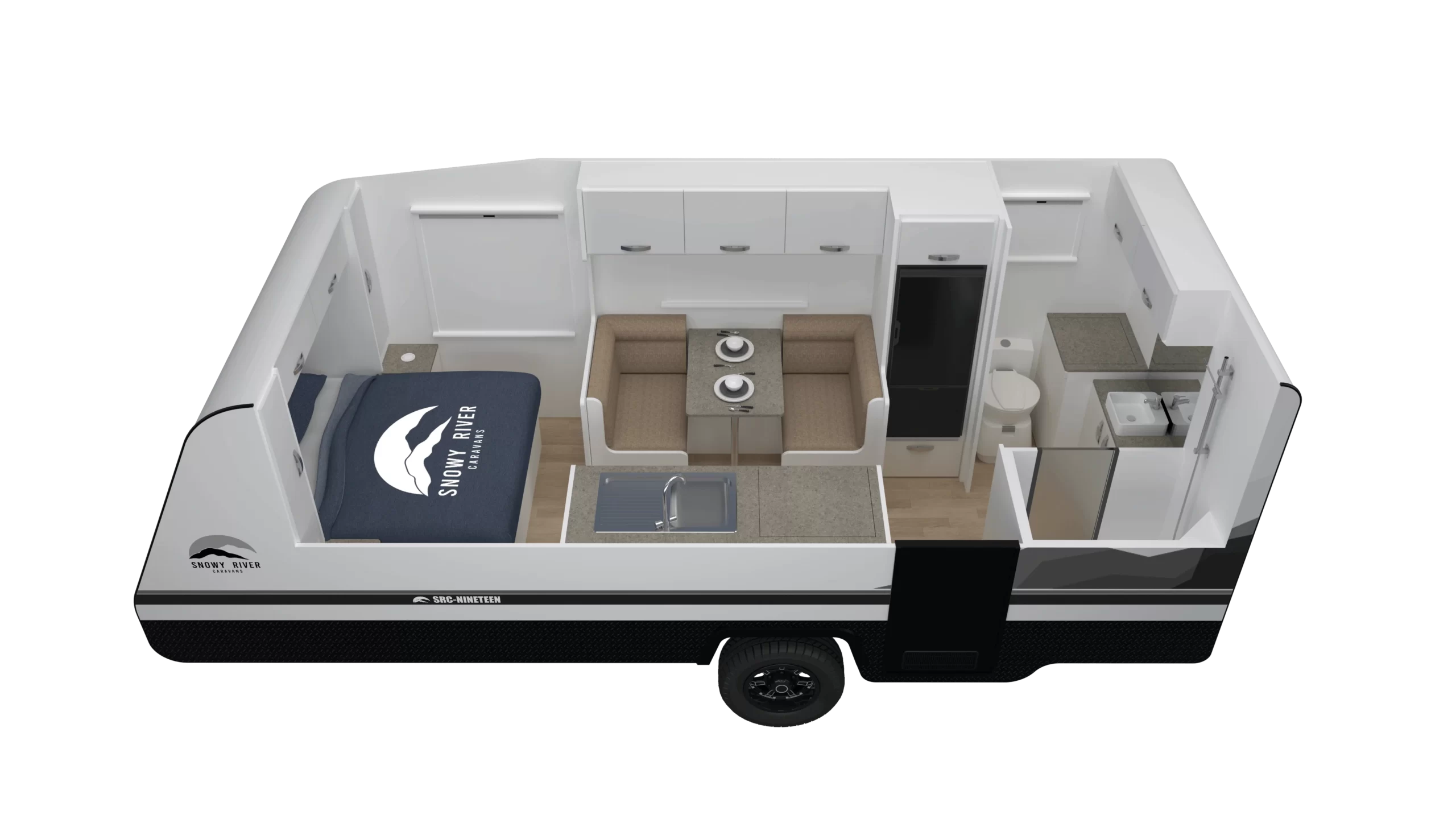 SRC-19E
SRC-19ESRC-19E
from $73,990 Tow-Away Nationwide*
Step into the SRC-19E, a 19ft caravan that redefines space with its transformative interior layout. ...
 Refrigerator
Refrigerator Shower
Shower Toilet
Toilet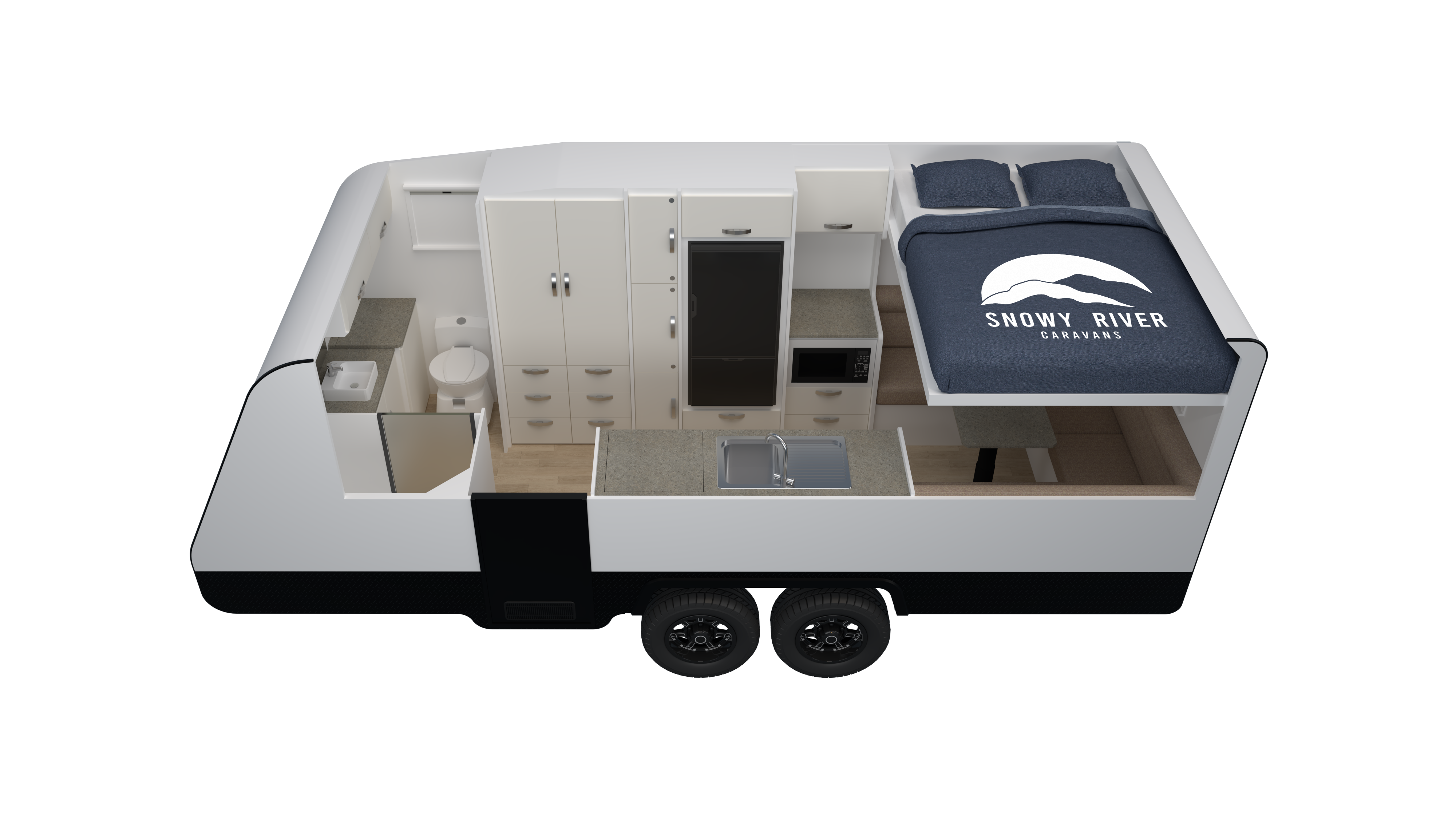 SRC-20
SRC-20SRC-20
from $71,490 Tow-Away Nationwide*
Introducing the SRC-20 2023 model, a 20ft caravan with shower and toilet for sale, expertly crafted...
 Sleeps up to 2
Sleeps up to 2 Refrigerator
Refrigerator Shower
Shower Toilet
Toilet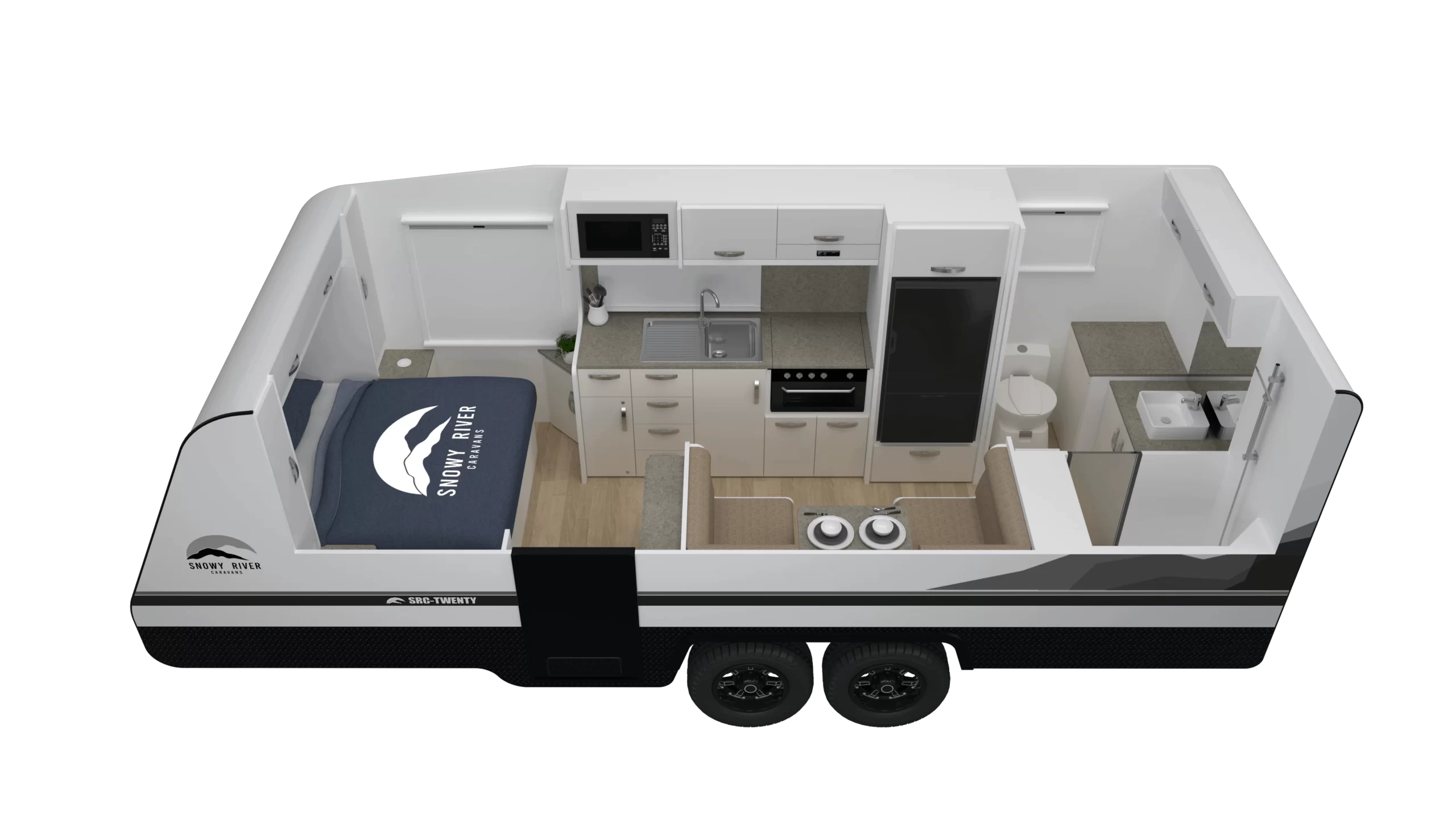 SRC-20F
SRC-20FSRC-20F
from $72,990 Tow-Away Nationwide*
The SRC-20F model is a 20ft bunk bed caravan and the ultimate choice for your family's next adventur...
 Sleeps up to 4
Sleeps up to 4 Refrigerator
Refrigerator Shower
Shower Toilet
Toilet SRC-21
SRC-21SRC-21
from $72,990 Tow-Away Nationwide*
The SRC-21 is a 21ft semi off-road caravan that offers the perfect balance of practicality and style...
 Sleeps up to 2
Sleeps up to 2 Refrigerator
Refrigerator Shower
Shower Toilet
Toilet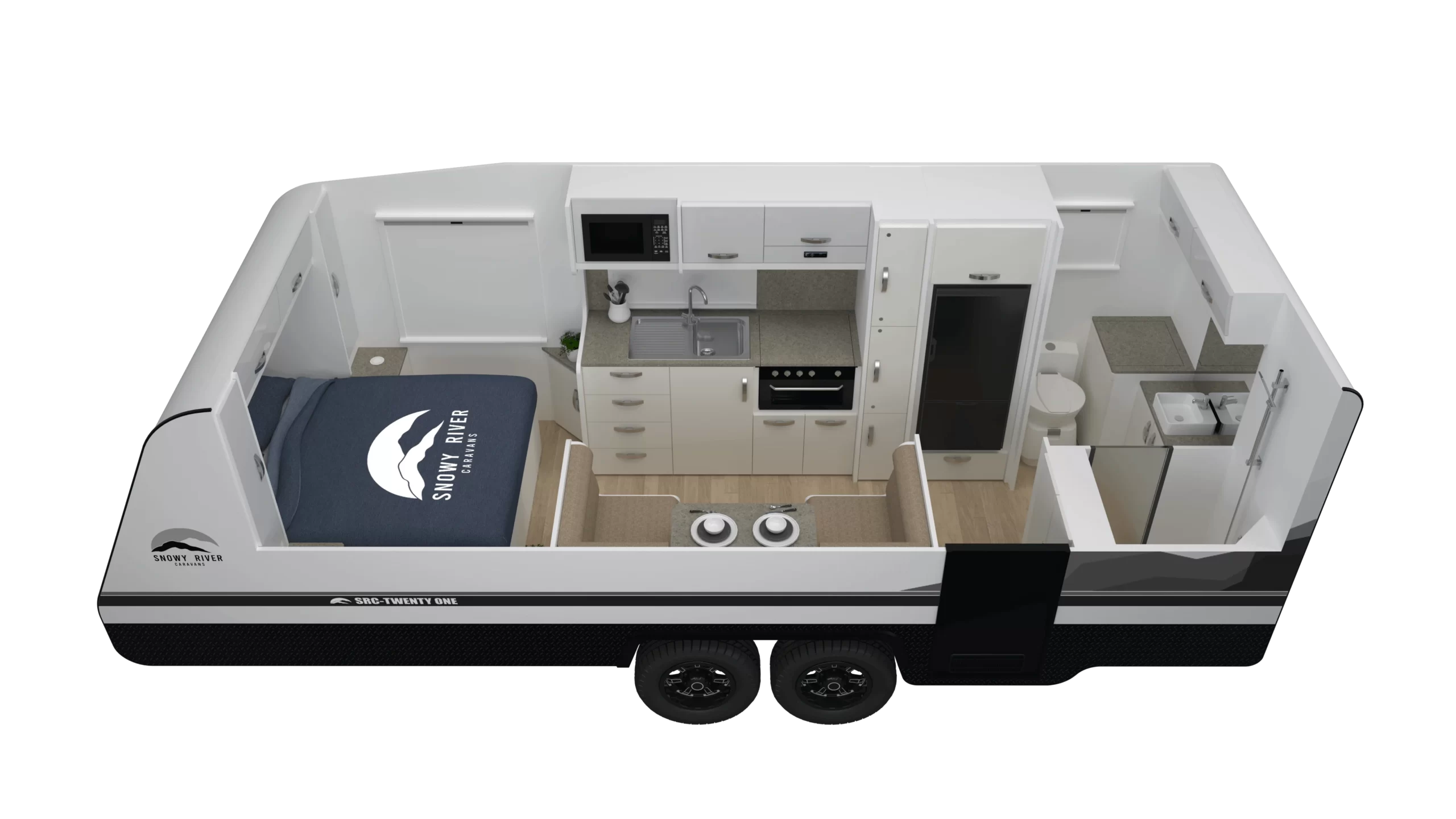 SRC-21S
SRC-21SSRC-21S
from $78,490 Tow-Away Nationwide*
The SRC-21S is a state-of-the-art 21 foot caravan with slide out that represents the future of carav...
 Sleeps up to 2
Sleeps up to 2 Refrigerator
Refrigerator Shower
Shower Toilet
Toilet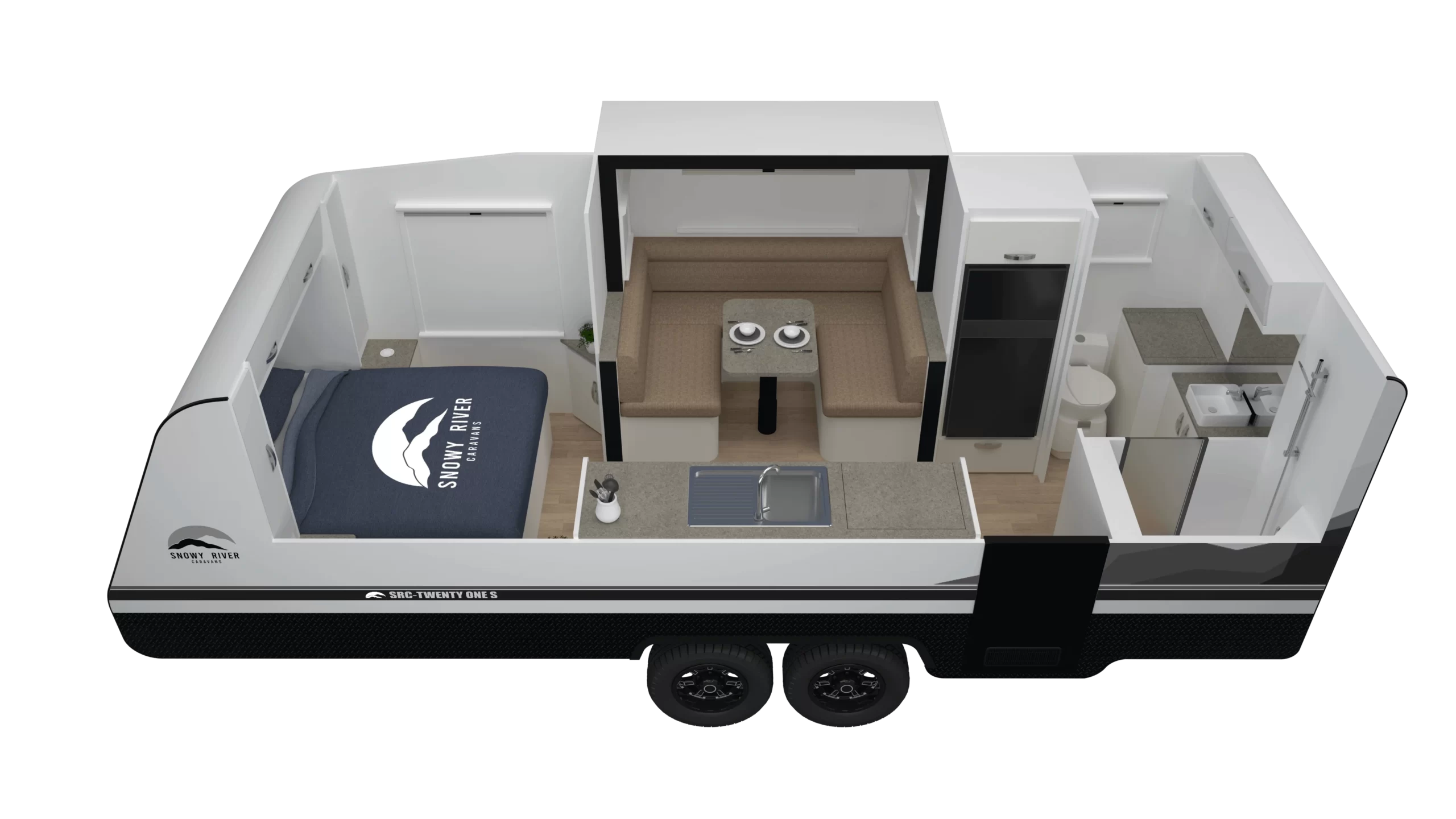 SRC-22
SRC-22SRC-22
from $73,990 Tow-Away Nationwide*
The SRC-22 is a 22ft 2-person caravan that provides exceptional quality at an affordable price. Undo...
 Sleeps up to 2
Sleeps up to 2 Refrigerator
Refrigerator Shower
Shower Toilet
Toilet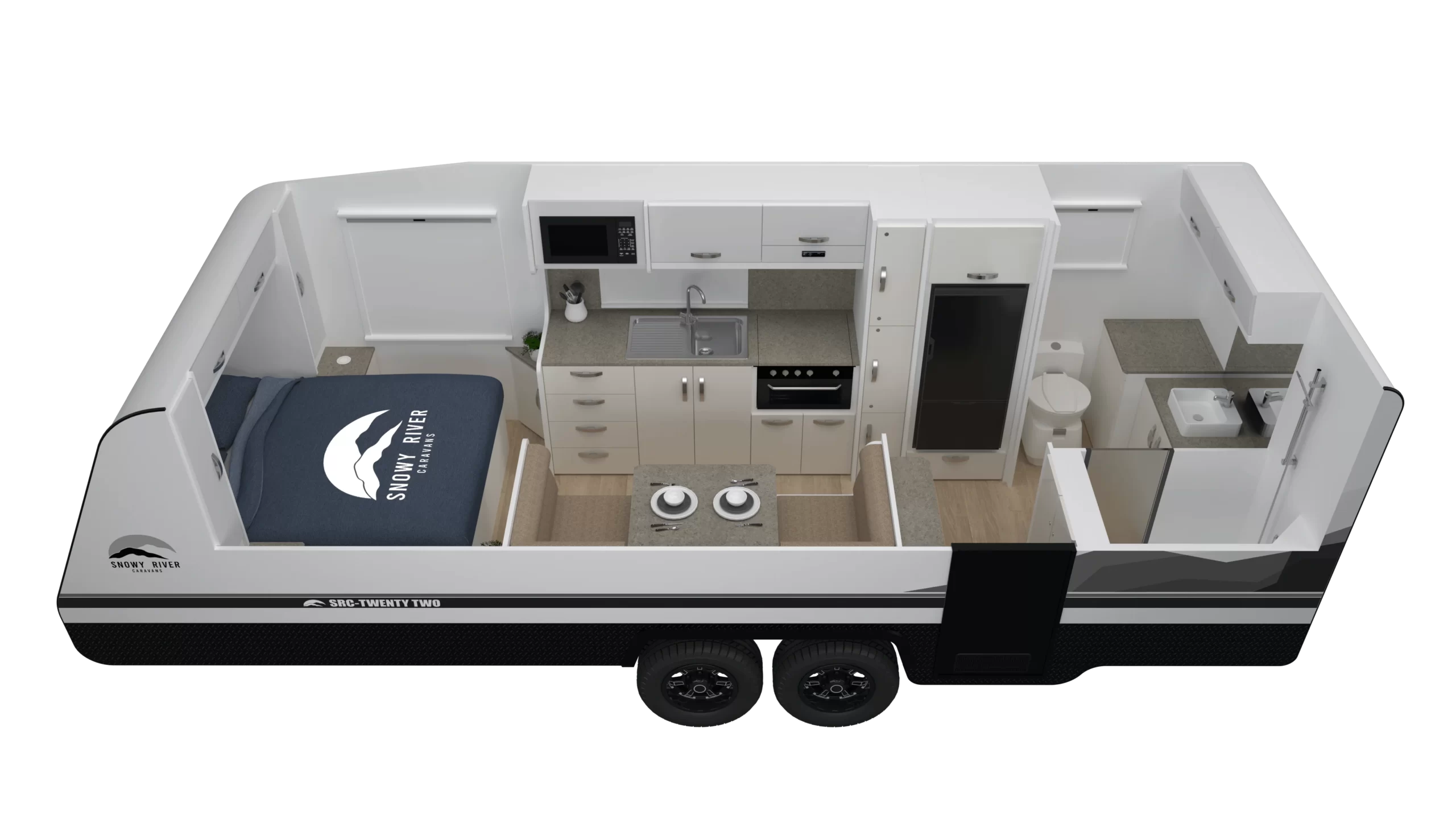 SRC-22F
SRC-22FSRC-22F
from $76,990 Tow-Away Nationwide*
Introducing the all-new SRC-22F model, a 22ft triple bunk caravan that stands as the ideal choice fo...
 Sleeps up to 5
Sleeps up to 5 Refrigerator
Refrigerator Shower
Shower Toilet
Toilet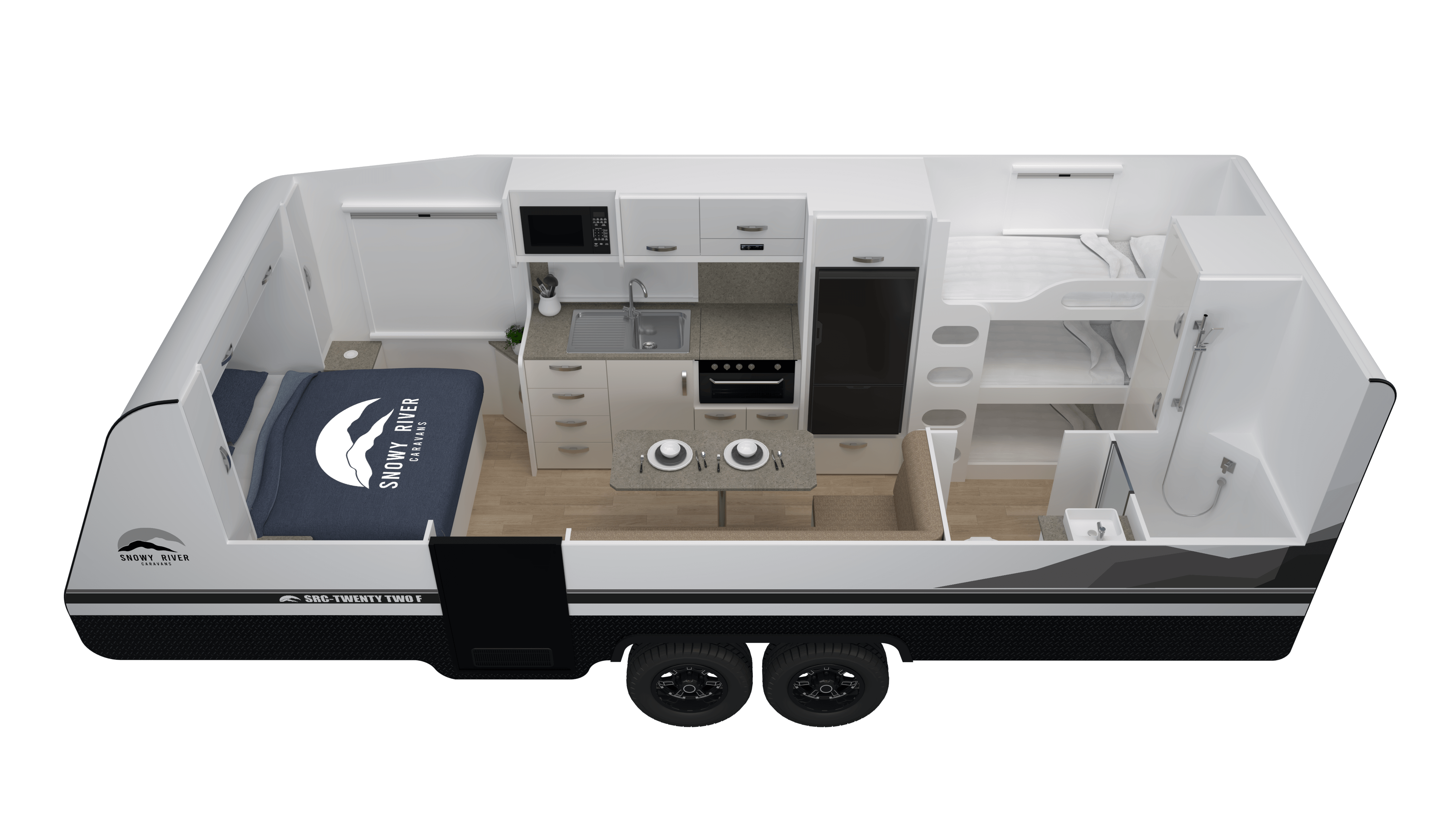 SRC-22S
SRC-22SSRC-22S
from $79,490 Tow-Away Nationwide*
The SRC-22S is a 22ft caravan with slide out lounge that is made for the modern adventurer. Designed...
 Sleeps up to 2
Sleeps up to 2 Refrigerator
Refrigerator Shower
Shower Toilet
Toilet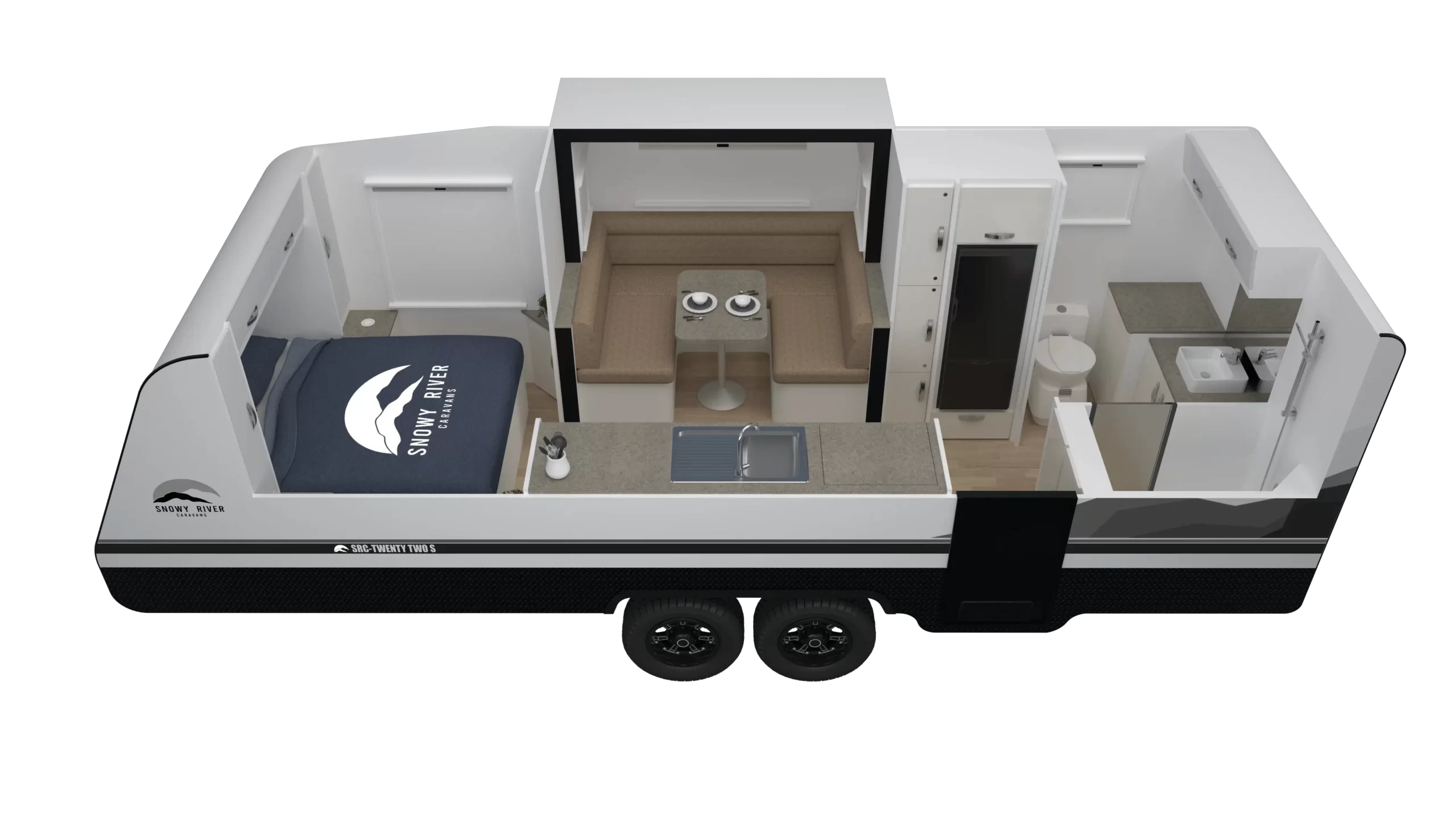 SRC-24
SRC-24SRC-24
from $77,490 Tow-Away Nationwide*
The SRC-24 stands as the largest and most impressive caravan in the Snowy River range. It features a...
 Sleeps up to 2
Sleeps up to 2 Refrigerator
Refrigerator Shower
Shower Toilet
Toilet SRTSRT-18
SRTSRT-18SRT-18
from $82,990 Tow-Away Nationwide*
Prepare to traverse Australia’s outback like never before with the all NEW Multi-Terrain SRT18. Th...
 Sleeps up to 2
Sleeps up to 2 Refrigerator
Refrigerator Shower
Shower Toilet
Toilet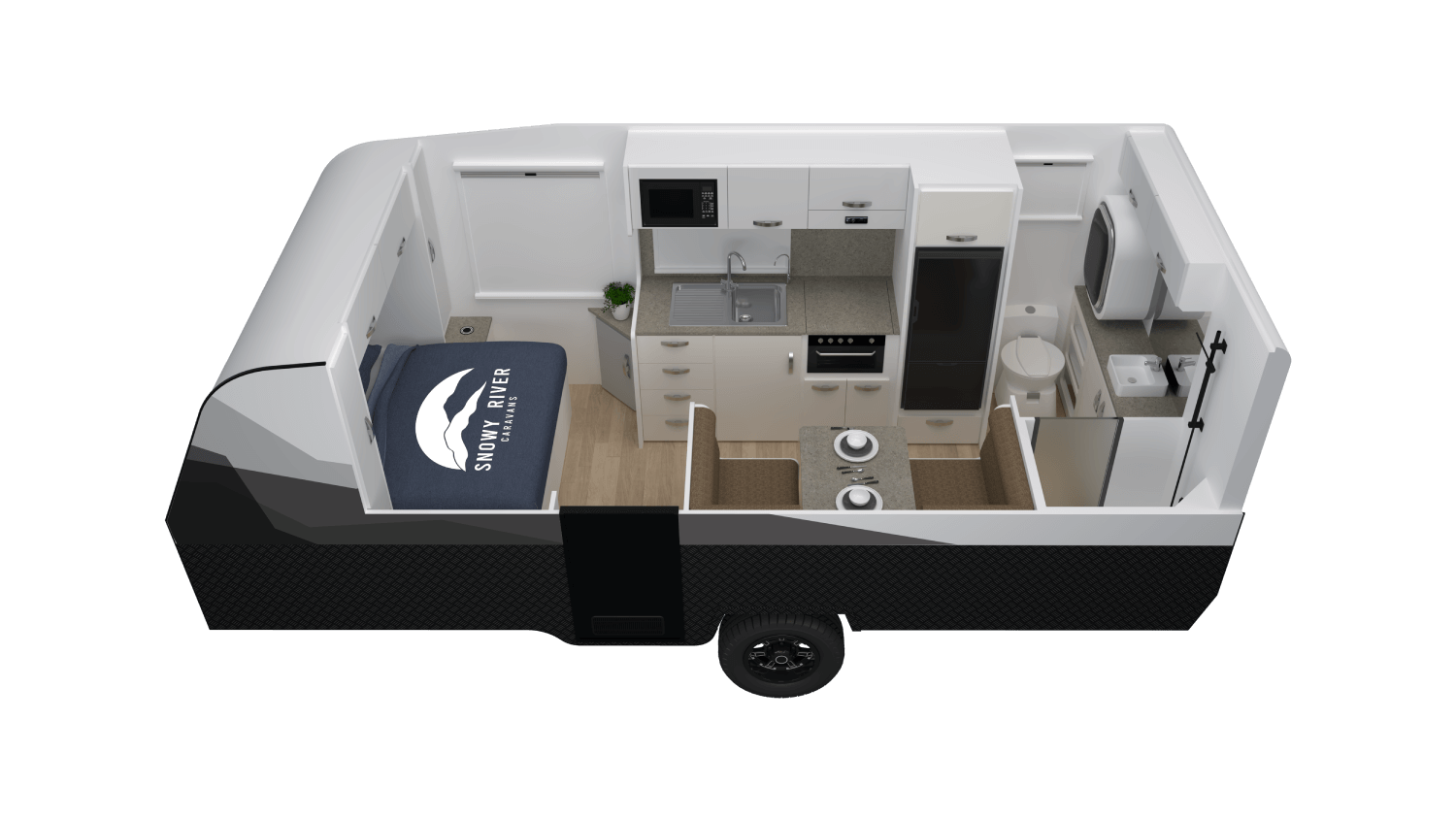 SRT-18F
SRT-18FSRT-18F
from $84,490 Tow-Away Nationwide*
The compact SRT18F is an exceptional family van with a small footprint. It comes loaded with all the...
 Refrigerator
Refrigerator Shower
Shower Toilet
Toilet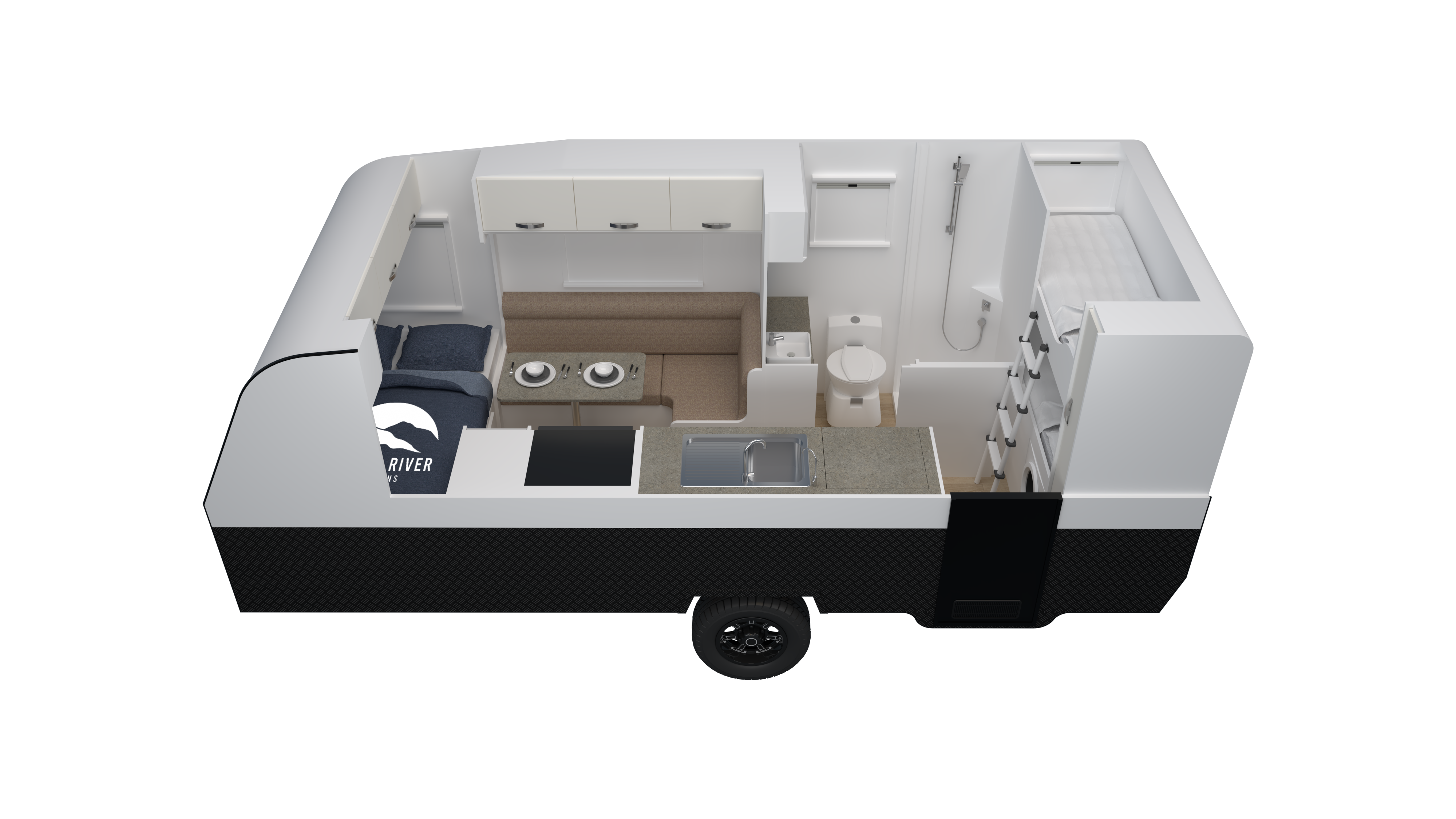 SRT-19
SRT-19SRT-19
from $84,990 Tow-Away Nationwide*
Introducing the Multi-Terrain SRT19, a 19ft off-road caravan with ensuite. With its versatile featur...
 Sleeps up to 2
Sleeps up to 2 Refrigerator
Refrigerator Shower
Shower Toilet
Toilet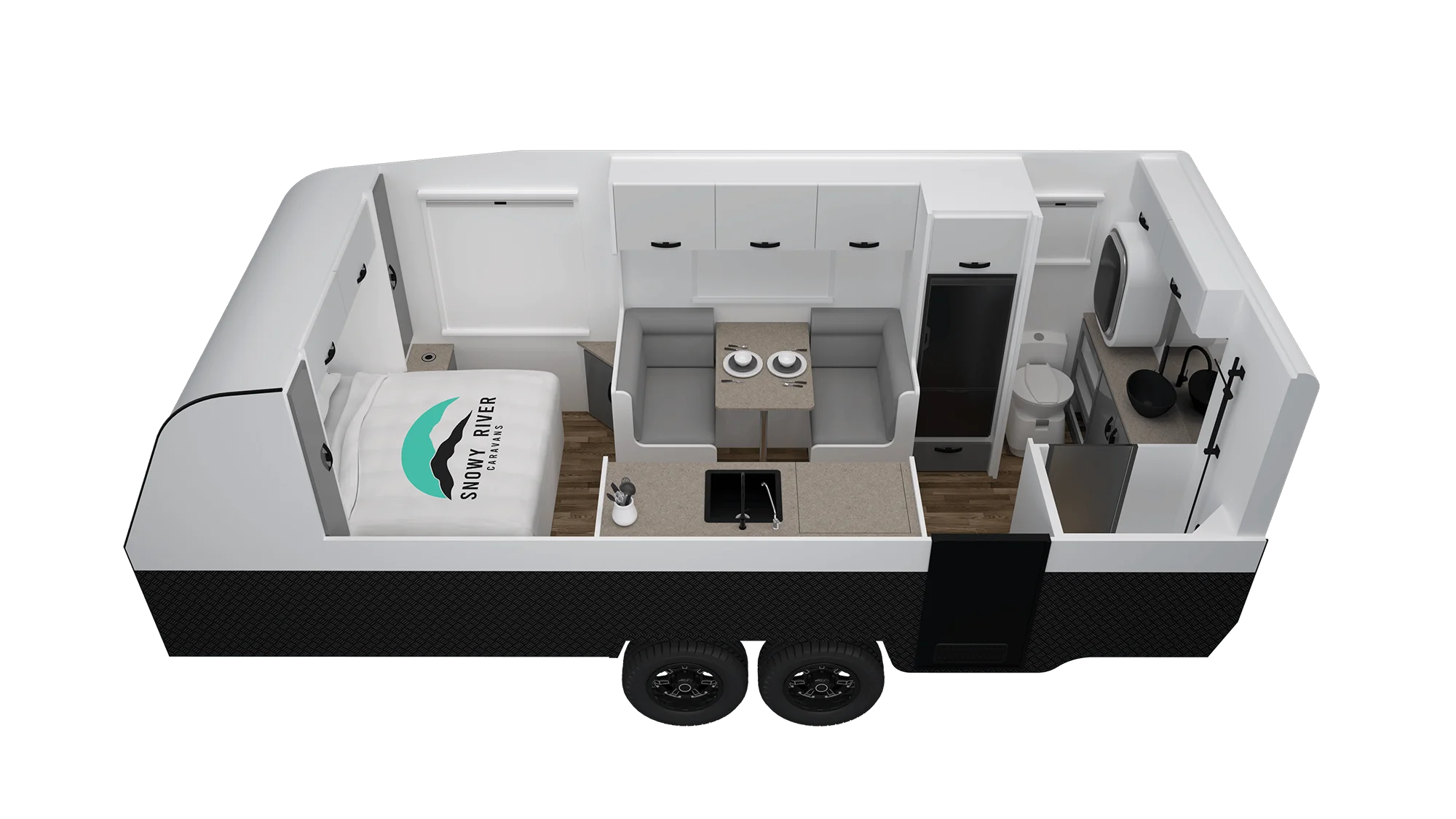 SRT-20
SRT-20SRT-20
from $86,490 Tow-Away Nationwide*
Discover the beauty of Australia with the sophisticated and roomy SRT20 Multi-Terrain, a 20ft off-ro...
 Sleeps up to 2
Sleeps up to 2 Refrigerator
Refrigerator Shower
Shower Toilet
Toilet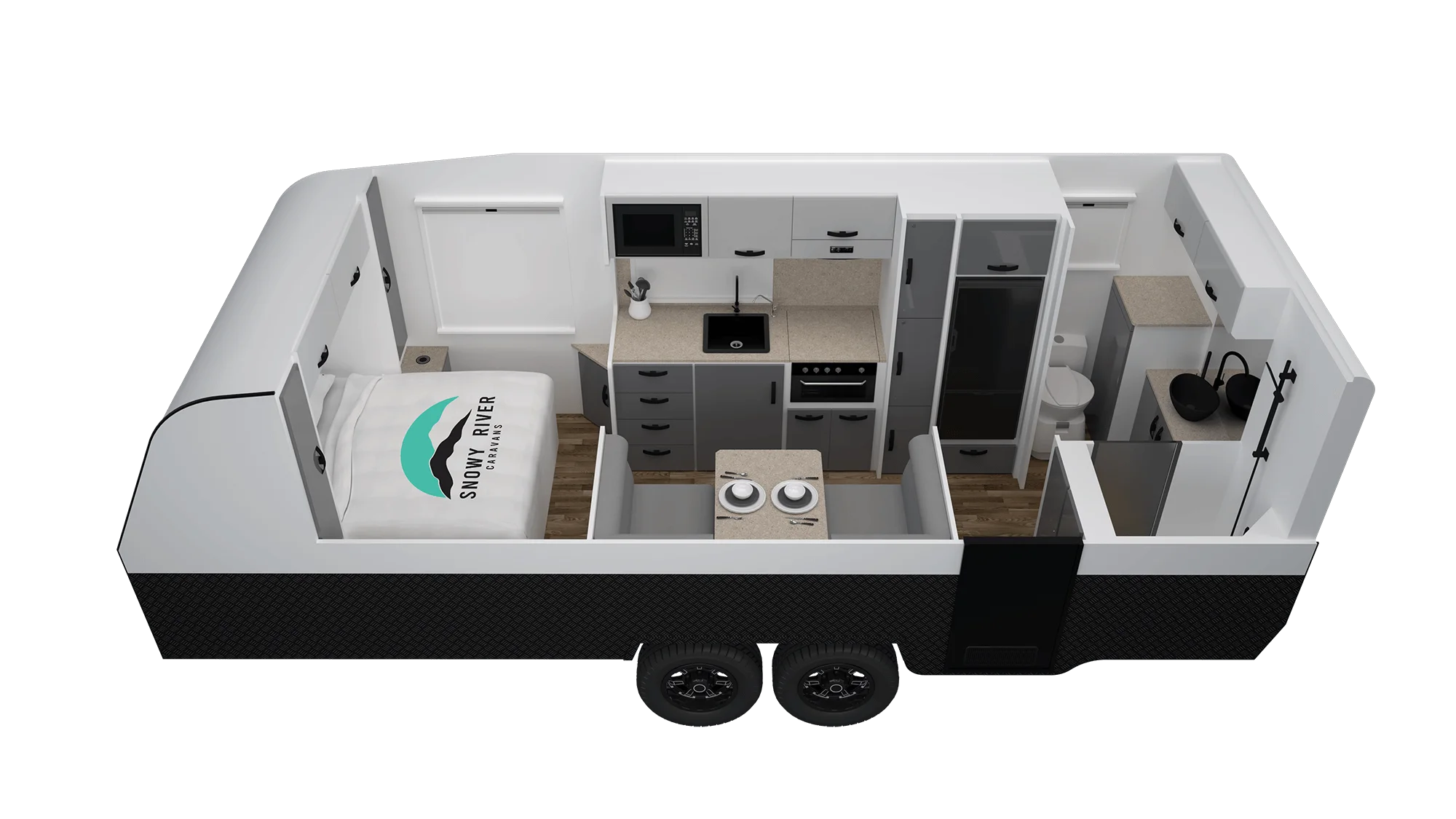 SRT-22F
SRT-22FSRT-22F
from $89,990 Tow-Away Nationwide*
The remarkable SRT22F is a spacious 6-berth caravan packed with all the necessary specs and features...
 Sleeps up to 5
Sleeps up to 5 Refrigerator
Refrigerator Shower
Shower Toilet
Toilet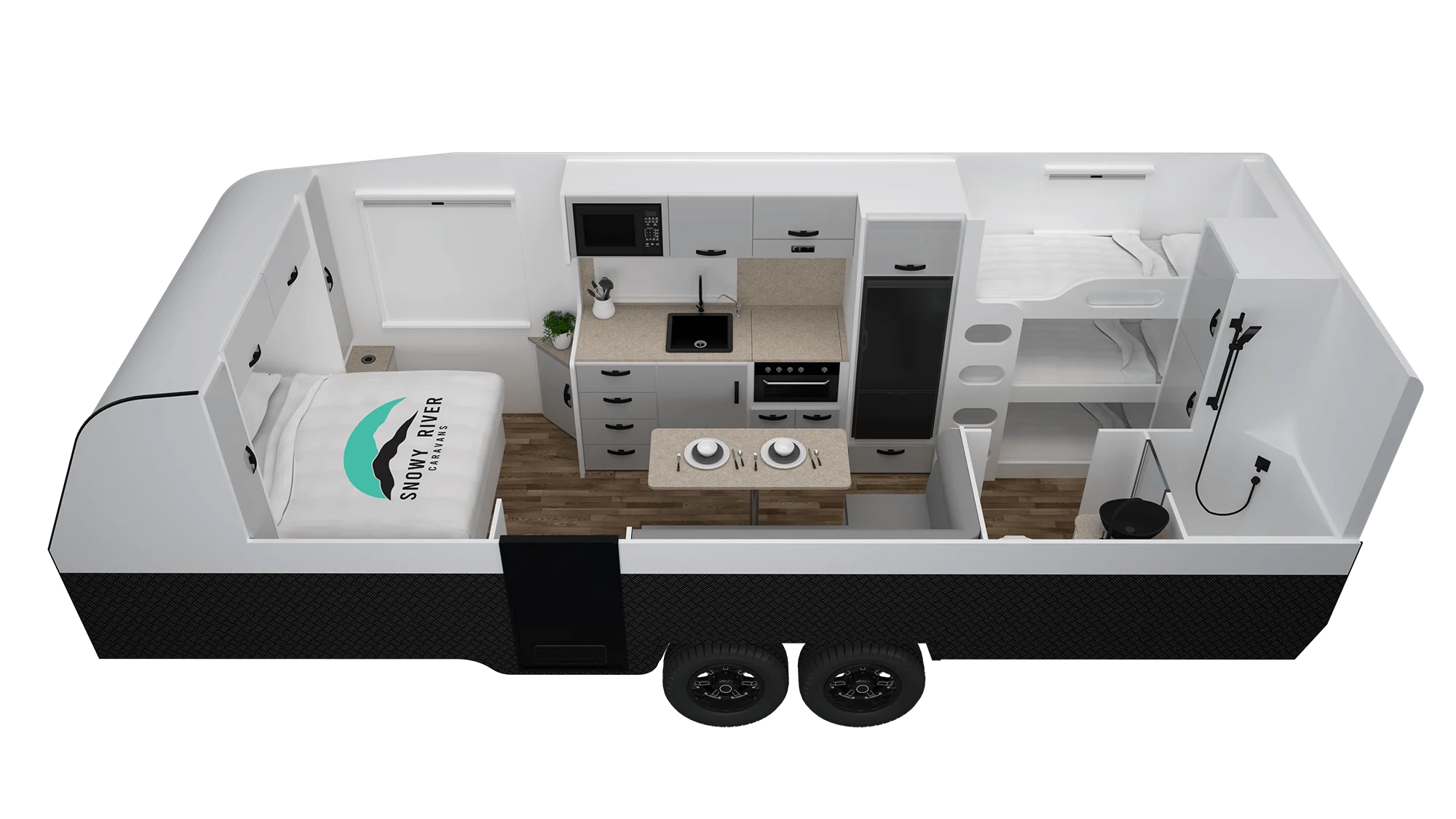 SRPSRP-18
SRPSRP-18SRP-18
from $58,490 Tow-Away Nationwide*
The SRP-18 is an 18ft small pop top caravan that offers a tremendous amount of living space despite ...
 Sleeps up to 2
Sleeps up to 2 Refrigerator
Refrigerator Shower
Shower Toilet
Toilet SRP-18F
SRP-18FSRP-18F
from $60,490 Tow-Away Nationwide*
The SRP-18F is an 18ft pop top caravan with ensuite and 2 bunks, and the smallest family van in the ...
 Sleeps up to 4
Sleeps up to 4 Refrigerator
Refrigerator Shower
Shower Toilet
Toilet SRP-19
SRP-19SRP-19
from $61,490 Tow-Away Nationwide*
The SRP-19 is a 19ft pop top caravan with shower and toilet that offers the features of a full-size ...
 Sleeps up to 2
Sleeps up to 2 Refrigerator
Refrigerator Shower
Shower Toilet
Toilet SRP-19F
SRP-19FSRP-19F
from $62,990 Tow-Away Nationwide*
The SRP-19F is a 19ft family pop top caravan with bunks that allows you and your family to get away ...
 Sleeps up to 4
Sleeps up to 4 Refrigerator
Refrigerator Shower
Shower Toilet
Toilet
- Build Your Dream
Frequently Asked Questions
General Information:
All sales inquires are managed through our extensive dealer network across Australia and New Zealand. Visit our Contact Dealers page for dealer locations and information, or select a location from the links below.
Caravan Sales Adelaide
Caravan Sales Melbourne
Caravan Sales NSW
Caravan Sales NZ
Caravan Sales Perth
Caravan Sales QLD
Caravan Sales Tasmania
In order to tow safely and legally, you must tow within your car’s towing capacity, which is the maximum amount of weight your vehicle is able to tow, and the maximum ball weight, as recommended by the manufacturer. This information can be found in your vehicles owner manual or vehicle specification located from the vehicle manufacturing website. It is also recommended to research the limits of the towbar provided. It is crucial to be aware that a vehicle’s towing capacity is reduced when taking into account how much of a load the tow vehicle itself has onboard (passengers, aftermarket mods, camping equipment, etc.) and – remember this – the vehicle-and-trailer combination always has to weigh within the Gross Combined Mass (GCM) limit, that is the maximum your vehicle-and-trailer combination can legally weigh. Read more about caravan towing rules and regulations here.
- Roof hatches closed and locked.
- Cupboards and drawers securely closed.
- Windows closed and locked.
- Shower door secured.
- Secure all appliances.
- TV off bracket and stowed securely.
- Refrigerator packed securely – door locked.
- Fire extinguisher fitted and locked.
- Gas cooker locked and stove top lid secured.
- Gas bottles turned off.
- Tyres – check pressure and adjust.
- Brakes checked and adjusted.
- Check all wheel nuts are present and tight.
- Water tank filled.
- Lights operating correctly.
- Wheel bearings checked.
- Remove jockey wheel.
- Ball coupling securely locked in position.
- Doors locked – steps raised.
- Jacks and supports raised.
- Release handbrake – remove wheel chocks.
- Safety chains secured.
- Adjust towing mirrors.
- External boot locked.
- Electric extension between car and van attached and checked.
- 240V electrical lead disconnected.
- Front and rear (if any) protector shades securely locked down.
- Anode on water heater checked (if fitted).
Yes, Snowy River Caravans is a member of Caravan Industry Association in Victoria.
Construction:
All Snowy River Caravans are semi-imported. The chassis, external shell and furniture are constructed using the latest technology by our parent company in China, to an average completion of 50-60%. The fit-out of components, appliances, all plumbing and electrical is completed in our advanced manufacturing assembly facility in Somerton Victoria.
The caravans are put through a rigorous inspection process maintained through our own Quality Management System, to ensure our customers have a high quality, compliant to Australian Standard product, to withstand Australian Conditions.
Considerable research and expertise have been invested into the design and in-house production of Snowy River’s lightweight but immensely durable floor and body sandwich panels. The floor is a critical element to the construction of any recreational vehicle. The floor not only supports the walls, but all of the internal elements of the vehicle. Strength is paramount to ensure rigidity, long life and durability.
Our floors are constructed by means of single piece 42mm thick sandwich panel. A fully welded aluminum frame provides the backbone of the floor. A durable layer of vinyl is bonded to a 3mm thick fiberglass skin, followed by 30mm thick XPS high density foam, lastly the bottom layer is another 3mm fiberglass chequer plate finish to provide protection against road debris.
The walls and roof form the remaining components of the external structure, providing a lightweight, fully insulated and aesthetically pleasing vehicle.
Our walls and roof are constructed by means of single piece 32mm thick sandwich panel, ensuring no gaps for potential water ingress. A fully welded aluminum frame provides the backbone of the structure. The internal layer is 3mm thick fiberglass skin offering a bright interior which is easily cleaned, followed by 25mm thick XPS high density foam, lastly the external layer is another 3mm fiberglass which provides a smooth easily washable great looking exterior, with the added protection against hail. For more information regarding Snowy River Caravans construction, check out our construction information page here.
Timber constructed vans, often known as stick and tin are manufactured largely from meranti timber frame with various types of external cladding glued to the frame. This is the general method of caravan construction for the last 40 odd years. The largest problem facing the stick and tin design is that they are prone to leak water; especially after years of movement and slight gaps forming between the cladding. This leaking leads to water damage of the timber and, in turn, frame rot, which often occurs outside of a warranty period, causing expensive repair costs.
A far more modern approach to caravan construction is sandwich panels. The sandwich panel is often around 20-40mm thick and will have a fibreglass outer layer, polystyrene middle (think ‘expander foam’), and a thin inner layer made from aluminium or fibreglass again to sandwich it on the inside. Sandwich panels are lightweight and incredible at insulating the inside of the van from the ambient temperature outside. The timber frame of the stick and tin style van is gone, replaced with an aluminium frame of higher strength and rot free. The simplest way of thinking about a sandwich panel is to imagine a wall, with the outer cladding, middle insulation, and inner walls, with framing throughout. The panel is then pressed at a high pressure along with glue to bond the inner and outer together (with XPS foam in the middle), and now you have the entire wall of the van in one piece. Adding windows is simple, as you just cut the window frame out of the side, and glue it in; no timber to worry about. Read more about this here.
Chassis, Suspensions and External Options:
Ultimately, you intended destinations, coupled with your type of tow vehicle will determine if you need an off road, semi-off road or touring caravan.
Touring caravans are designed to be both lightweight and strong for easy towing and stability. These vans are best suited for travelling on bitumen roads and well-kept unsealed roads, which makes them ideal for people sticking to major highways and caravan parks. A touring caravan are usually fitted with an onboard battery, solar panel, water pump and ensuite, which provides for an overnight stay and limited free camping. They are compact, with low ground clearance, making them a great choice for travellers with mobility issues.
Semi Off-Road caravans are the perfect option for travellers seeking independence and extended free camping. These caravans are designed with a strengthened chassis, independent suspension, and larger tyres for additional ground clearance. This makes Semi Off-Road caravans great for travelling to remote camping spots on rougher dirt roads. Semi Off-Road caravans are typically equipped with solar and battery systems, freshwater tanks, and a grey water tank for the ultimate self-sufficient holiday.
Off-Road caravans are made to ‘Go Bush’ and can withstand rough unsealed roads and extended Outback camping. These caravans are purpose built with a heavy-duty chassis, tow recovery points, long travel trailing-arm independent suspensions with shock absorbers, heavy duty brakes, and quality off-road tyres. They also come with an articulating coupling hitch for secure towing in a range of on and off-road conditions.
Off-Road caravans are equipped with multiple solar panels and lithium batteries, freshwater tanks, and a grey water tank for lengthy free camping in remote locations. Protection is provided through stone guards, strengthened interior cabinetry, and covers for pipes, tanks, and electrical components. These caravans tend to be heavy and as such require appropriate tow vehicles to drive and operate safely.
Electrical:
If the caravan is left unused for a period of time, it is recommended to charge the battery periodically (by turning the isolating switch on and connecting to 240 Volt power). If the caravan has a solar system and the panels get even occasional sun this will maintain the battery in good condition. Otherwise, the van will have to be plugged into power every 4 to 6 weeks for 24 hours to maintain the charge in the battery. It is always a good idea to charge the battery before each trip. For more information regarding the electrical function of Snowy River Caravans, read our caravan electrical guide.
It is an Australian law requirement that all caravans over 750kg must have a tow vehicle with fitted and working electric brakes. They work by controlling the braking force from within your car to your caravans’ independent brakes whilst towing. There are several varieties of brake controller units on the market, when choosing one ensure it is compatible with your tow vehicle and caravan’s requirements. Another consideration is if the brake controller is ESC compatible or not. For more information regarding the electrical function of Snowy River Caravans, read our caravan electrical guide.
Depending on the capacity, generators will power all your electrical needs in a van, from a water pump to your air-conditioner. Even the smallest 10i Honda will be sufficient to power a small fridge, water pump, lights and a 19in LCD TV, however we recommend a Honda 20i with 2000W output as a minimum. People with CPAP machines will require one to run their 240V machine, although 12V machines are now available. For more information regarding the electrical function of Snowy River Caravans, read our caravan electrical guide.
When connected to your tow vehicle, the Grey Anderson plug charges the battery while driving. The blue Anderson plug provides direct 12V power to your fridge when driving. For more information regarding the electrical function of Snowy River Caravans, read our caravan electrical guide.
12-volt systems are powered from an onboard battery, and provide power for the water pump, as well as lighting, TV, radio, fans and a toilet pump. The 12V system runs everything that uses low wattage. 12V systems allow you to keep your lights on and still use your water pump if there is a loss of mains power – as long as your battery is charged. For more information regarding the electrical function of Snowy River Caravans, read our caravan electrical guide.
Free camping has become increasingly popular over the last decade, avoiding overcrowded holiday parks and getting off the beaten track.
Caravans have improved in technology, with appliances being designed to use less power than ever before. Depending on the size of your caravan and the number of occupants, being self-sufficient with power can be achieved. Most Snowy River caravans are fitted with one AGM battery and solar panel as standard. Upgrading to a second battery and solar panel will assist in maintaining power for longer periods depending on weather conditions. A portable solar panel can also be connected via and Anderson plug underneath your caravan which is a standard feature.
If you wish to run your air-conditioner when free-camping, the best option is a generator. In normal conditions a generator with a 2000W output will suffice.
Plumbing:
Each freshwater tank has been provided by its own individual water filler, which is the only filling point. For more information regarding caravan plumbing, read our comprehensive breakdown here.
Service, Warranty and Maintenance:
Snowy River Caravans are proud to offer a 5-Year Structural Warranty, alongside a 2-Year Manufacturer’s Warranty.
If work is required on your caravan that is covered by warranty, you should immediately contact your nearest Snowy River Dealer, or Snowy River directly. Please be advised that Snowy River will not reimburse costs of repairs performed by other companies without prior written consent.
A warranty claim must be accompanied by a proof of purchase, full details of the fault and maintenance records.
Warranty Claim Form

